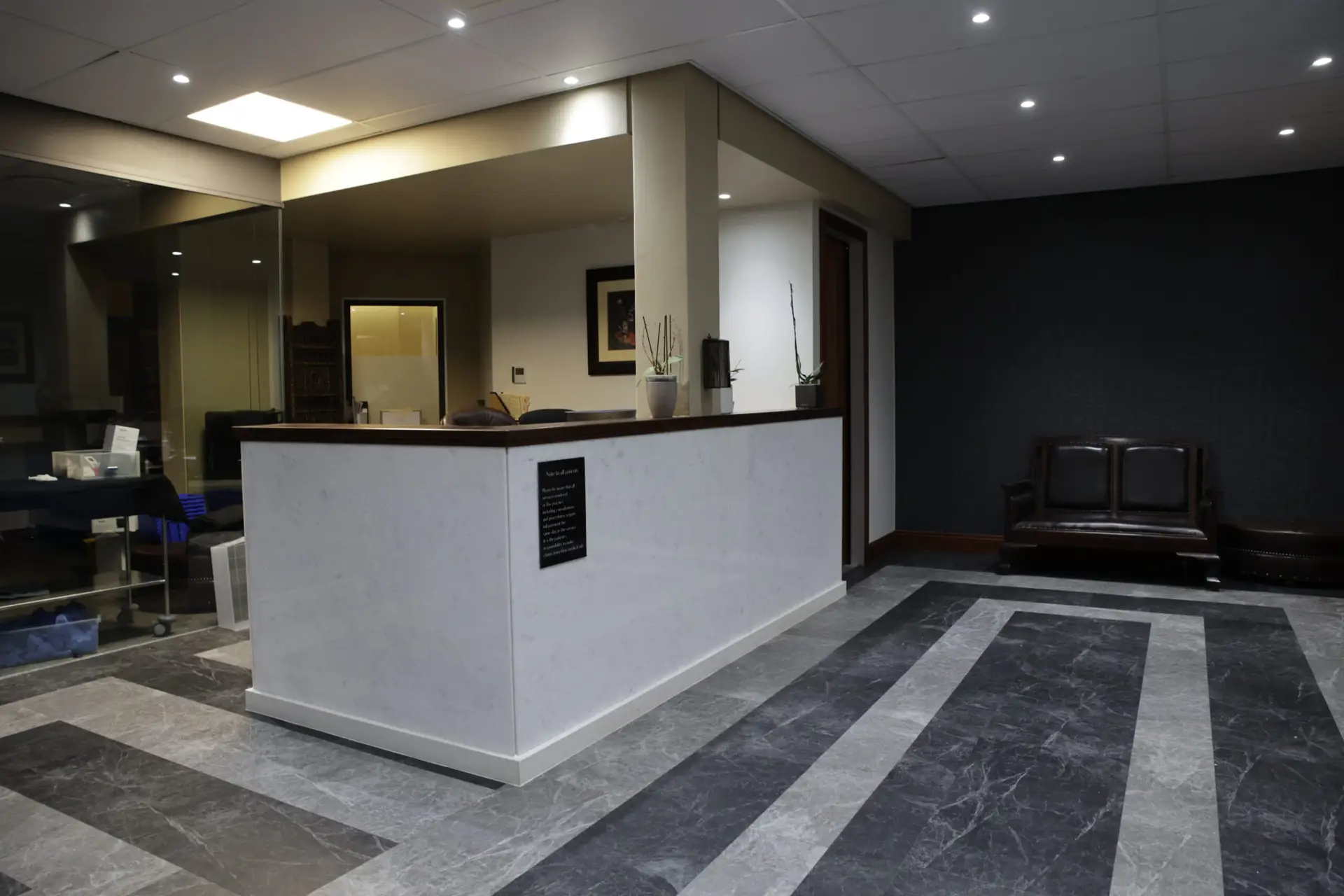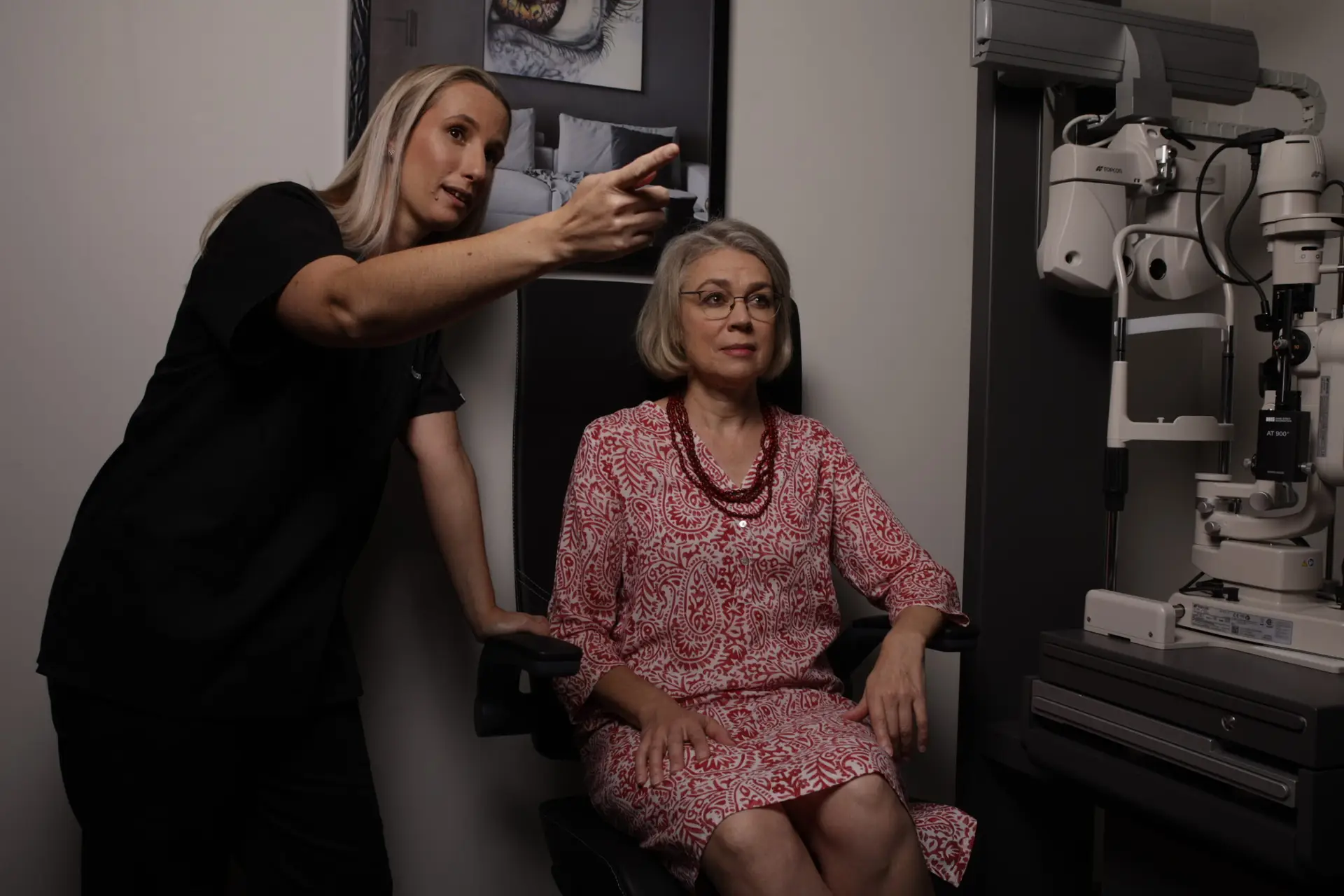INFORMATION CENTRE
PRK [Photorefractive Keratectomy] Guidelines
You are going to Sandton Eye Clinic soon to have a life-changing procedure. If you know what to expect the journey to visual freedom can be stress-free.
You are going to Sandton Eye Clinic soon to have a life-changing procedure. If you know what to expect the journey to visual freedom can be stress-free.

The healing process starts even before the surgery is performed. By following a few pre-procedure instructions, your recovery may be smoother and complication free.
We understand that living without your contact lenses may be a challenge. Wearing contact lenses change the shape of your cornea. PRK is a very precise surgery that reshapes of your cornea, and it is important for the cornea to be in its natural state. Your eye surgeon will give you instructions on when to stop wearing your contact lenses. It may be anything from 1 week (for soft contact lenses) to 6 weeks (for hard contact lenses).
Alcohol dehydrates your eyes. For optimal healing it is advised to avoid alcohol for 24 hours before and 48 hours after surgery.
Drink enough water for the few days before and weeks after PRK. This will keep your eyes hydrated during the healing process.
Do your house cleaning before your procedure. You will have to avoid dust in the days after your procedure. On the day of your procedure, you will have to arrange transport to and from Sandton Eye Clinic.
We know that having a procedure is daunting. Most of our patients are surprised at how quick the procedure is with minimal discomfort. Try to get a good night’s rest the evening before. Wear loose comfortable clothing. It is best to wear lint free clothing and avoid fabrics like wool. Although any lint in the surgical field can simply be washed away it is best to avoid it. Do not use any perfume or make-up.
If you are not a candidate for LASIK, PRK surgery can be another excellent option to help you achieve your overall vision goals. PRK is a refractive surgery technique designed to reshape the cornea and enhance your ability to focus clearly without the aid of corrective eyewear.
The results are like LASIK but healing time and discomfort after surgery is more. To be prepared it is often easier to know exactly what will be happening during your 15 minute per eye procedure.
Your ophthalmologist will check the thickness of your cornea and take a detailed scan of the cornea’s surface. Your eye surgeon uses these measurements to program the computer-based laser used during surgery. During the procedure your eye will be numbed with eye drops. Your eye surgeon will place an eyelid holder on your eye to keep you from blinking.
You will be asked to stare at a light so that your eye does not move. Trans PRK is performed with an excimer laser, which uses a cool ultraviolet light beam to precisely remove very tiny bits of tissue from the surface of the cornea in order to reshape it. When you reshape the cornea in the right way, it works better to focus light into the eye and onto the retina, providing clearer vision than before. Excimer lasers can also correct astigmatism, by smoothing an irregular cornea into a more normal shape.
The best results not only come from your surgeon’s expertise, but also how you take care of your eyes after the procedure.

PRK is a Laser Vision Correction procedure that treats refractive errors permanently. When the surgery is performed by an experienced surgeon using a careful screening process, the rate of success is very high.
In some cases, years after PRK, your vision might not be as sharp as the first few years after the procedure. This is called regression and even though it can happen, it is unlikely. Each year after PRK there is a slightly increased chance of needing a retreatment. It is common for refractive surgeons to offer an enhancement free of charge in the first year after PRK if needed. Similar to wearing glasses, PRK does not prevent your eyes from changing as a result of other diseases or aging.
Around the age of 45 you will start wearing reading glasses. This can be corrected again with a laser procedure called PresbyPRK/LASIK. Later, old age is likely to give rise to cataracts or macular degeneration which would need a whole different treatment approach.
Before we do PRK, preparation is key to success. An advanced ocular examination takes about 1.5-2 hours. Not only will these tests determine candidacy for laser vision correction but also screen for other eye diseases. It’s important to note that you might need a driver. Your eyes may be dilated to examine the back of your eye, this leads to light sensitivity and blurry vision.
The procedure itself takes about 15 minutes per eye. For PRK patients the vision will fluctuate for up to two weeks after the procedure.
You should not wear contact lenses for two weeks before having PRK.
Unfortunately, most medical aids do not cover PRK as it is seen as lifestyle surgery. Medical aids may, however, refund the planning-tests from your day-to-day benefits if you have funds available. Some medical aid options do include a refractive benefit. This often only partially covers the procedure. After surgery, patients are welcome to claim back from their medical aid if they do have a refractive benefit in their plan, but the full costs of the procedure remain the patient’s responsibility.
We are partnered with @MediWalletSA! It takes the stress out of paying out of pocket or to cover those costs your medical aid does not cover.
For pre-approval, SMS your SA ID Number*Gross Monthly Income to 45105.
For more info, visit www.mediwallet.co.za
SMS costs R1.50. Ts&Cs apply.
How do I know if I am a candidate for Laser Vision Correction?
If you are interested in spectacle freedom but you are not sure if you are a candidate, you can take our online self-tests:
18-45 years old: LASIK self-test
https://sandtoneyeclinic.co.za/lasik-self-test/
45-60 years old: PresbyLASIK self-test
Presby-LASIK Self-Test
60+ years old: Refractive Cataract Surgery and lens options self-test
https://sandtoneyeclinic.co.za/cataract-self-test/
This self-test should not be considered medical advice or a diagnosis. A complete examination is necessary to determine candidacy.
The long term visual outcomes of LASIK and PRK are similar. LASIK is, however, much more convenient than PRK from a recovery perspective. With LASIK you will likely be able to return to your normal daily routine as soon as the day after surgery because you should have clear vision and minimal discomfort.
With PRK initial recovery is about 1 week during which you will experience a scratchy, gritty feeling. Although you will be able to return to work after the first week, complete visual recovery may take 6 weeks to 3 months. During this time your vision may fluctuate.
The best time to plant a tree was 20 years ago. The next best time is now. The best time for laser vision correction is when you are 18, but if you want clear, effortless vision and you are considered a perfect candidate, the next best time is right now. Laser vision correction can be life-changing at various stages of life, allowing people to do what they love without the inconvenience of glasses and contact lenses.
PRK does not wear off, it’s a one-time procedure. PRK permanently changes the shape of your cornea. It is an extremely accurate, virtually painless, a fifteen-minute outpatient procedure with a short recovery period to normal activities. Rarely an enhancement may be necessary within the first year due to unique differences between patients and their recovery leading to over or under correction. Sandton Eye Clinic offers an enhancement free of charge in this period.
Like the rest of our body, our eyes will age as well. When we reach age 45 our lens will change leading to the need for readers. This is the same whether you had PRK or not. At this stage a slightly different procedure PresbyPRK/LASIK can get rid of readers as well.
Around 65 you will once again start developing cataracts like everyone else that did not have PRK, Cataract surgery with multifocal lenses will give you spectacle independence that will last until old age.
There are vision correction surgical options at all ages over 18. PRK corrects vision from age 18 to about 40. After 40 PresbyPRK/LASIK should be considered to ensure you do not need reading glasses in the near future. At around 60 you might start to develop cataracts which means that a lens exchange or cataract surgery with multifocal lenses should keep you spectacle free until old age.
PRK complication rate is extremely low. It is important to understand that after surgery you might have some temporary side effects that clear up in a few weeks to months. You did have surgery. These include dry eyes, halos and glare.
Complications are more serious and are not expected but can be addressed with medication or additional procedures. The PRK complication rate is less than 0.3%. The most common complication is infection. Rarely, there may be under or over correction that will be corrected at no additional charge at Sandton Eye Clinic during an enhancement.
It is important to remember that every surgical procedure, even PRK, has risks. All eyes are not the same. If you are considering PRK discuss your risk profile with your surgeon. If your risk is higher your surgeon may suggest a different procedure.
PRK does not wear off, it’s a one-time procedure. PRK permanently changes the shape of your cornea. It is an extremely accurate, virtually painless, a fifteen-minute outpatient procedure with a short recovery period to normal activities. Rarely an enhancement may be necessary within the first year due to unique differences between patients and their recovery leading to over or under correction. Sandton Eye Clinic offers an enhancement free of charge in this period.
Like the rest of our body, our eyes will age as well. When we reach age 45 our lens will change leading to the need for readers. This is the same weather you had PRK or not. At this stage a slightly different procedure PresbyPRK/LASIK can get rid of readers as well.
Around 65 you will once again start developing cataracts like everyone else that did not have PRK. Cataract surgery with multifocal lenses will give you spectacle independence that will last until old age.
PRK is considered a lifestyle procedure and not offered at public hospitals. Public hospitals do prescribe glasses to correct refractive errors.
Returning to work: You will be booked off for one week. Many patients can return to work 5-7 days after the procedure.
Computer vision syndrome or digital eye strain is a group of eye problems that result from staring at your screen for too long. Your eye muscles must continuously focus nearby. Try looking at something about 6 meters aways every 20 minutes for 20 seconds to rest your eye muscles. Remember to blink while looking at your screen. PRK does not prevent computer vision syndrome but may make relaxing in front of the TV more comfortable, especially if you like to lie on the couch while watching TV and your glasses get in the way.